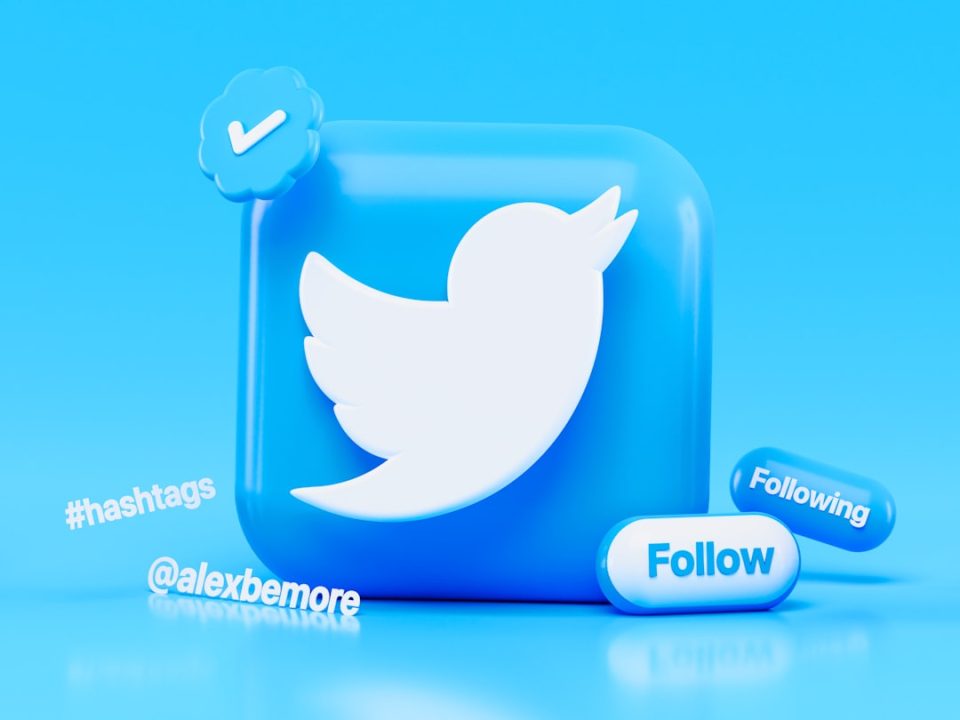Email marketing with Full-Service Marketing Agency is a powerful tool that businesses can use to connect with their audience, build brand awareness, and drive sales. It involves sending targeted emails to a group of individuals who have expressed interest in a company’s products or services. Email marketing allows businesses to reach their customers directly, delivering personalized messages and offers right to their inbox.
One of the key benefits of email marketing is increased brand awareness. By consistently sending emails to your audience, you can keep your brand top of mind and establish a strong presence in their inbox. This helps to build trust and credibility, making it more likely that customers will choose your business over competitors.
Another benefit of email marketing with Full-Service Marketing Agency is customer engagement. When done right, email campaigns can be highly engaging and interactive, encouraging recipients to take action. Whether it’s clicking on a link, making a purchase, or sharing the email with others, email marketing provides an opportunity for businesses to connect with their audience on a deeper level.
Finally, email marketing can drive sales and generate revenue for businesses. By including compelling offers and promotions in your emails, you can entice customers to make a purchase. Additionally, email campaigns can be used to upsell or cross-sell products, increasing the average order value and boosting overall sales.
Key Takeaways of Full-Service Marketing Agency
- Email marketing is an important tool for businesses to reach and engage with their audience.
- Working with a full-service marketing agency can provide numerous benefits, including expertise in email campaign automation and design.
- Automating your email campaigns can increase reach and engagement with your audience.
- Eye-catching and creative email designs can improve open and click-through rates.
- Developing a successful newsletter email marketing strategy involves creating valuable content and targeting the right audience.
The Benefits of Working with a Full-Service Marketing Agency
A full-service marketing agency is a company that offers a wide range of marketing services, including email marketing. They have a team of experts who specialize in various areas of marketing, such as design, copywriting, and analytics. By working with a full-service agency, businesses can leverage their expertise and resources to create effective email campaigns.
One of the main benefits of working with an agency is access to a team of experts. Instead of relying on one person to handle all aspects of your email marketing, you have access to a team of professionals who specialize in different areas. This ensures that your email campaigns are well-designed, well-written, and well-optimized for maximum results.
Another benefit of working with a full-service agency is access to advanced technology. Email marketing platforms and tools are constantly evolving, and it can be difficult for businesses to keep up with the latest trends and features. By working with an agency, you can take advantage of their advanced technology and stay ahead of the competition.
Additionally, a full-service agency can provide a comprehensive marketing strategy that incorporates email marketing into your overall marketing efforts. They can help you develop a cohesive brand message and ensure that your email campaigns align with your other marketing channels. This holistic approach can lead to better results and a higher return on investment.
Automating Your Email Campaign for Maximum Reach
Automating your email campaigns is a great way to save time and increase efficiency. Instead of manually sending individual emails, you can set up automated workflows that send emails based on specific triggers or actions. This allows you to reach a larger audience and deliver timely messages without having to do all the work yourself.
There are several types of automated emails that businesses can use to maximize their reach. One example is welcome emails, which are sent to new subscribers or customers to introduce them to your brand and provide valuable information. Another example is abandoned cart emails, which are sent to customers who have added items to their cart but haven’t completed the purchase. These emails can help recover lost sales and encourage customers to complete their purchase.
Post-purchase follow-up emails are another type of automated email that can be highly effective. These emails are sent after a customer has made a purchase and can include order confirmation, shipping updates, and recommendations for related products. By staying in touch with customers after their purchase, you can build loyalty and encourage repeat business.
Creating Eye-Catching and Creative Email Designs
| Metrics | Description |
|---|---|
| Open Rate | The percentage of recipients who opened the email. |
| Click-Through Rate (CTR) | The percentage of recipients who clicked on a link within the email. |
| Conversion Rate | The percentage of recipients who completed a desired action, such as making a purchase or filling out a form. |
| Bounce Rate | The percentage of emails that were undeliverable and returned to the sender. |
| Unsubscribe Rate | The percentage of recipients who opted out of receiving future emails. |
| Design Elements | Use of color, typography, images, and layout to create an eye-catching and visually appealing email design. |
| Personalization | The use of recipient’s name, location, or other personal information to create a more personalized email experience. |
| Mobile Responsiveness | The ability of the email design to adapt to different screen sizes and devices, ensuring a seamless experience for mobile users. |
Email design plays a crucial role in the success of your email campaigns. A well-designed email can capture the attention of your audience, convey your brand message effectively, and encourage recipients to take action. On the other hand, a poorly designed email can be easily ignored or deleted.
Important
When creating email designs, it’s important to use images, colors, and typography effectively. Images can help to grab attention and convey your message visually. However, it’s important to use high-quality images that are relevant to your content and optimized for email delivery.
Colors can also have a significant impact on the effectiveness of your email designs. Different colors evoke different emotions and can influence how recipients perceive your brand. It’s important to choose colors that align with your brand identity and create a cohesive look and feel across all your emails.
Typography is another important element of email design. The font you choose can impact readability and the overall aesthetic of your emails. It’s important to choose fonts that are easy to read on different devices and sizes. Additionally, using headings, subheadings, and bullet points can help to break up text and make it more scannable for recipients.
Developing a Successful Newsletter Email Marketing Strategy
A newsletter is a regularly distributed publication that provides valuable content to subscribers. It can be a powerful tool for businesses to engage with their audience, build relationships, and drive traffic to their website. Developing a successful newsletter email marketing strategy involves careful planning and consideration of your audience’s needs and interests.
One of the key tips for developing a successful newsletter strategy is segmenting your audience. Instead of sending the same newsletter to all subscribers, you can divide your audience into different segments based on their interests, demographics, or behavior. This allows you to send more targeted and relevant content that is more likely to resonate with each segment.
Another tip for developing a successful newsletter strategy is providing valuable content. Your newsletter should offer something of value to your subscribers, whether it’s educational information, industry insights, or exclusive offers. By providing valuable content, you can build trust and establish yourself as an authority in your industry.
Including calls-to-action in your newsletter is another important element of a successful strategy. A call-to-action is a clear and compelling message that encourages recipients to take a specific action, such as visiting your website, making a purchase, or signing up for a webinar. By including calls-to-action in your newsletter, you can drive traffic to your website and generate leads or sales.
Building a High-Quality Email List for Targeted Outreach
Building a high-quality email list is essential for the success of your email marketing campaigns. A targeted email list consists of individuals who have expressed interest in your products or services and have given you permission to contact them via email. By focusing on quality over quantity, you can ensure that your emails are reaching the right audience and generating the desired results.
One tip for building a targeted email list is using lead magnets. A lead magnet is a valuable piece of content that you offer to your audience in exchange for their email address. This could be an ebook, a whitepaper, a checklist, or any other type of content that is relevant to your audience’s needs and interests. By offering something of value, you can attract high-quality leads who are more likely to engage with your emails.
Optimizing your website is another important step in building a high-quality email list. You can include opt-in forms on your website that allow visitors to subscribe to your email list. It’s important to make these forms prominent and easy to fill out, and to clearly communicate the benefits of subscribing to your emails.
Leveraging social media is another effective way to build an email list. You can promote your lead magnets or offer exclusive discounts or promotions to your social media followers in exchange for their email address. By leveraging the power of social media, you can reach a wider audience and attract new subscribers to your email list.
Personalizing Your Emails for Improved Engagement
Personalizing your emails is a great way to improve engagement and conversions. Instead of sending generic emails to your entire list, you can tailor your messages to each individual recipient based on their preferences, behavior, or demographics. This can help to create a more personalized and relevant experience for your audience.
One tip for personalizing emails is using dynamic content. Dynamic content allows you to display different content to different recipients based on specific criteria. For example, you can show different product recommendations based on a recipient’s past purchases or display different offers based on their location. By using dynamic content, you can deliver more targeted and relevant messages that are more likely to resonate with each recipient.
Segmenting your audience is another important element of personalization. By dividing your audience into different segments based on their interests, demographics, or behavior, you can send more targeted and relevant content. For example, you can send different emails to new subscribers versus long-time customers, or to customers who have made a recent purchase versus those who haven’t.
Using personalization tokens is another effective way to personalize your emails. Personalization tokens allow you to insert dynamic content into your emails that is specific to each recipient. For example, you can include the recipient’s name in the subject line or body of the email, or display their recent purchase history or browsing activity. By using personalization tokens, you can create a more personalized and engaging experience for each recipient.
Measuring Your Email Campaign Results for Better ROI
Measuring the results of your email campaigns is essential for improving your return on investment (ROI). By tracking key metrics and analyzing the data, you can gain insights into what’s working and what’s not, and make data-driven decisions to optimize your campaigns for better results.
One important metric to track is open rates. Open rates measure the percentage of recipients who open your emails. A high open rate indicates that your subject lines are compelling and that recipients are interested in your content. By tracking open rates, you can identify trends and patterns and optimize your subject lines for better engagement.
Click-through rates (CTR) are another important metric to track. CTR measures the percentage of recipients who click on a link in your email. A high CTR indicates that your content is engaging and that recipients are taking action. By tracking CTR, you can identify which links or calls-to-action are most effective and optimize your emails for better conversions.
Conversion rates are another key metric to measure. Conversion rates measure the percentage of recipients who complete a desired action, such as making a purchase or filling out a form. By tracking conversion rates, you can identify which emails or offers are driving the most conversions and optimize your campaigns for better results.
Staying Compliant with Email Marketing Regulations
Staying compliant with email marketing regulations is essential to protect your business and maintain the trust of your audience. There are several regulations that businesses need to be aware of, such as the CAN-SPAM Act in the United States and the General Data Protection Regulation (GDPR) in the European Union.
The CAN-SPAM Act sets guidelines for commercial email messages and gives recipients the right to opt out of receiving future emails. To stay compliant with CAN-SPAM, businesses need to include a clear and conspicuous unsubscribe link in every email, honor opt-out requests promptly, and include accurate header information in their emails.
The GDPR is a regulation that governs the collection, use, and storage of personal data of individuals in the European Union. To stay compliant with GDPR, businesses need to obtain consent from individuals before sending them marketing emails, provide clear information about how their data will be used, and honor requests for data access or deletion.
To stay compliant with email marketing regulations, it’s important to keep up-to-date with the latest guidelines and requirements. You can consult legal experts or seek guidance from industry organizations to ensure that your email marketing practices are in compliance with the law.
Elevating Your Email Marketing with a Full-Service Agency
In conclusion, email marketing is a powerful tool that businesses can use to connect with their audience, build brand awareness, and drive sales. By working with a full-service marketing agency, businesses can leverage their expertise and resources to create effective email campaigns. From automating your email campaigns to creating eye-catching designs, developing a successful newsletter strategy, building a high-quality email list, personalizing your emails, measuring your results, and staying compliant with regulations, a full-service agency can help elevate your email marketing efforts and achieve better results. So consider working with an agency to take your email marketing to the next level.
If you’re interested in the potential of email marketing for success, you’ll definitely want to check out this informative article by NKB Agency. They delve into the various strategies and techniques that a full-service email marketing agency can employ to help businesses achieve their goals. From crafting compelling content to segmenting your audience and optimizing your campaigns, this article covers it all. To learn more about the power of email marketing, click here: https://nkb.agency/potential-of-email-marketing-for-success/.







